Hopevale & Battle Camp Road to Laura Excursion
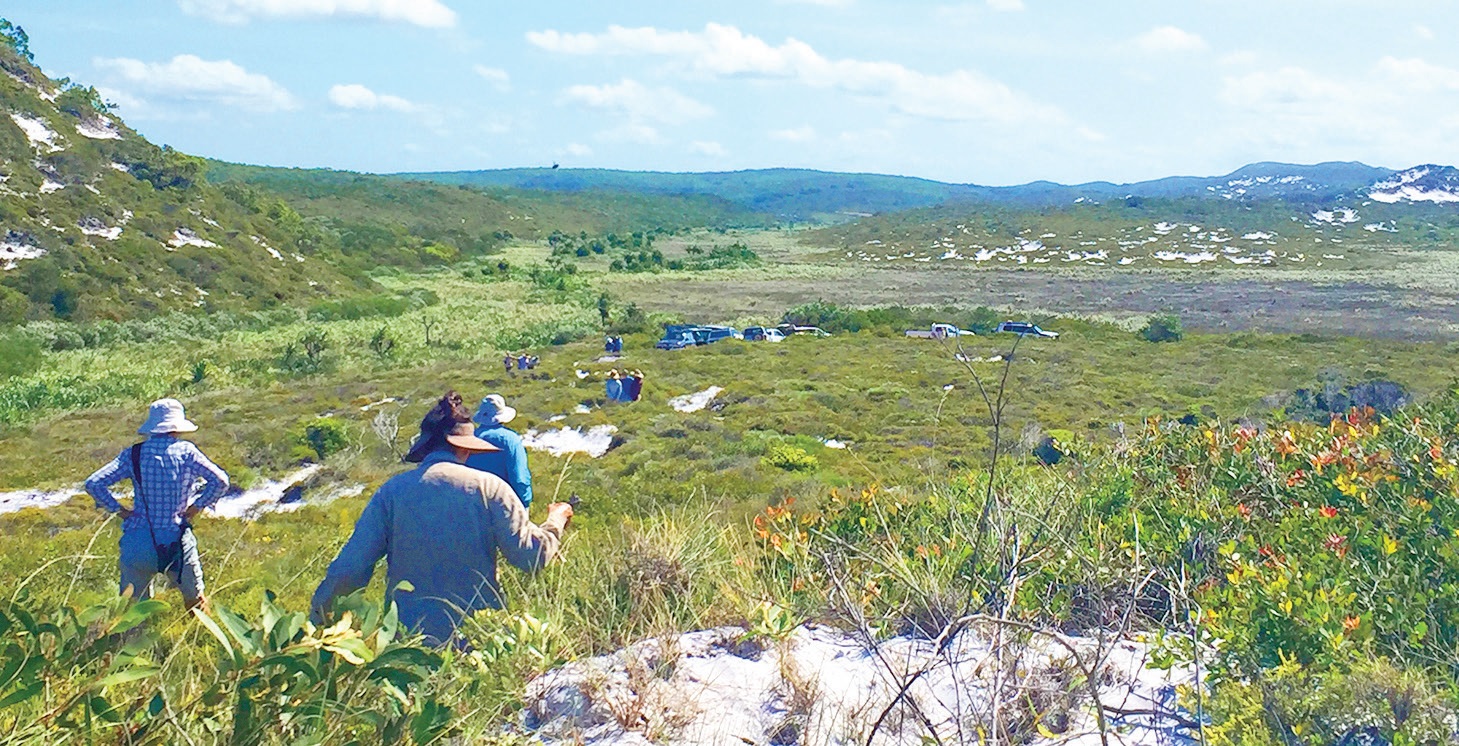
Authors: Peter Radke and Renee Venturato
Photos: Renee Venturato
Published: Journal September 2021
On 4 June 2021, 26 people from SGAP embarked on a five-day excursion to Hopevale, north of Cooktown, the Battle Camp Road and the Laura area. Our Tablelands Branch was pleased to have four members from the Cairns Branch and one member from the Innisfail Branch join us.
As a group, we hadn’t been to this part of the world for some time and these areas of Southern Cape York are very significant plant areas because of the soils and the climate. Sandstone areas from Sydney to Cape York are always interesting plant wise and sand dune country has its own unique flora, eg. Fraser Island, Stradbroke Island and Cape Flattery/Hopevale sand dunes. The Hopevale sand dunes are a meeting place and the northern limit for flora from Southern Queensland, eg. Banksia robur, Callistemon (Melaleuca) polandii and the southern limit for the plants of the Cape York dune country that come down to the Cooktown area, eg. Neofabricia myrtifolia, Syzygium banksii, Banksia dentata, Hibbertia banksii.
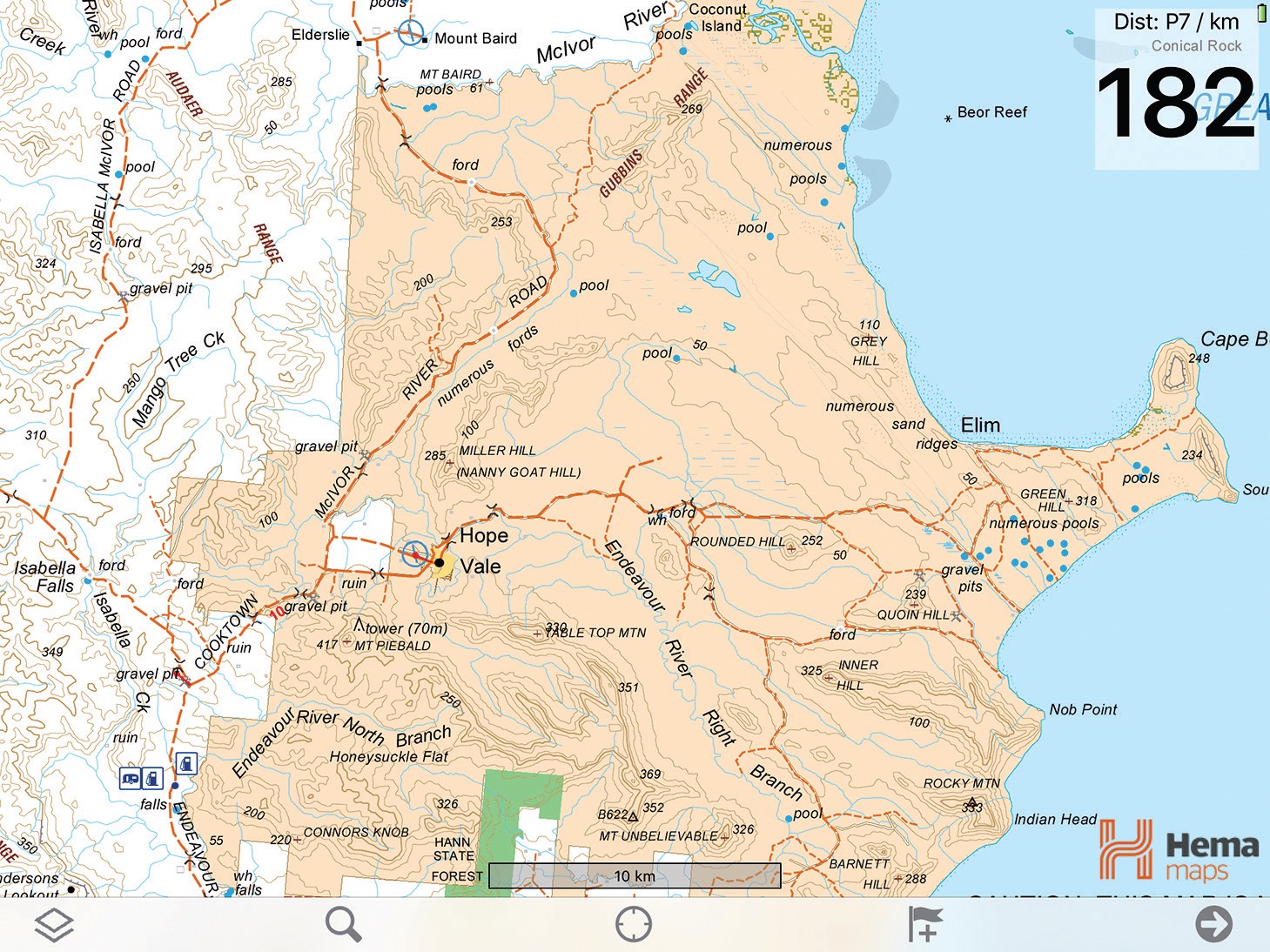
Hopevale Hema Map 2019
Likewise for the rainforest communities, the Cooktown area (Shipton’s Flat and the McIvor River) is the meeting place for the Wet Tropics and Cape York rainforests. Over the five days we had many interesting plant stops that covered a large range of habitats including heath, rainforest, swamp, beach dunes, dry sand dune rainforest, riverine rainforest and sandstone areas.
We would like to acknowledge Peter’s late wife, Ann Radke, who, in the 1980s, wrote the two booklets ‘The Vegetation of the McIvor River – Cape Flattery Sand Dunes’ and ‘The Vegetation of the Battle Camp Road between Cooktown and Laura’ that we reproduced to give to the participants.
Also, thanks to Stuart Worboys for updating the plant names.
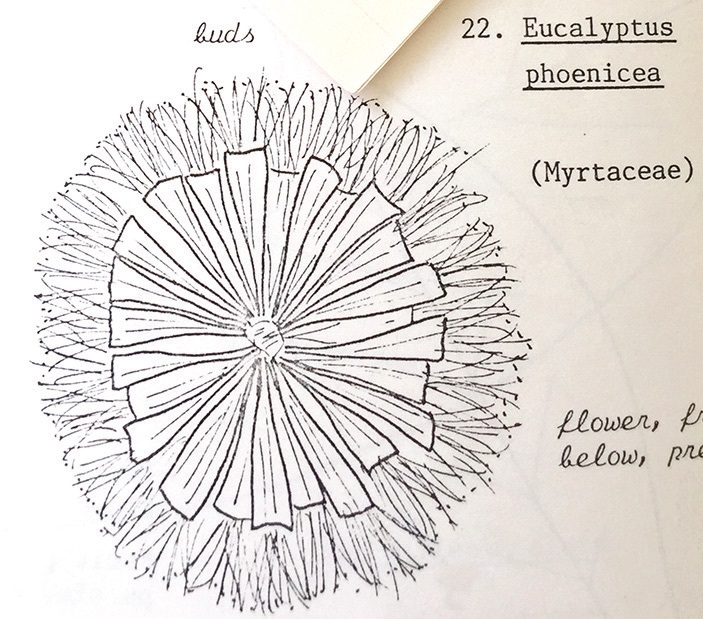
Illustrations by Ann Radke of Eucalyptus Phoenicea pressed flower
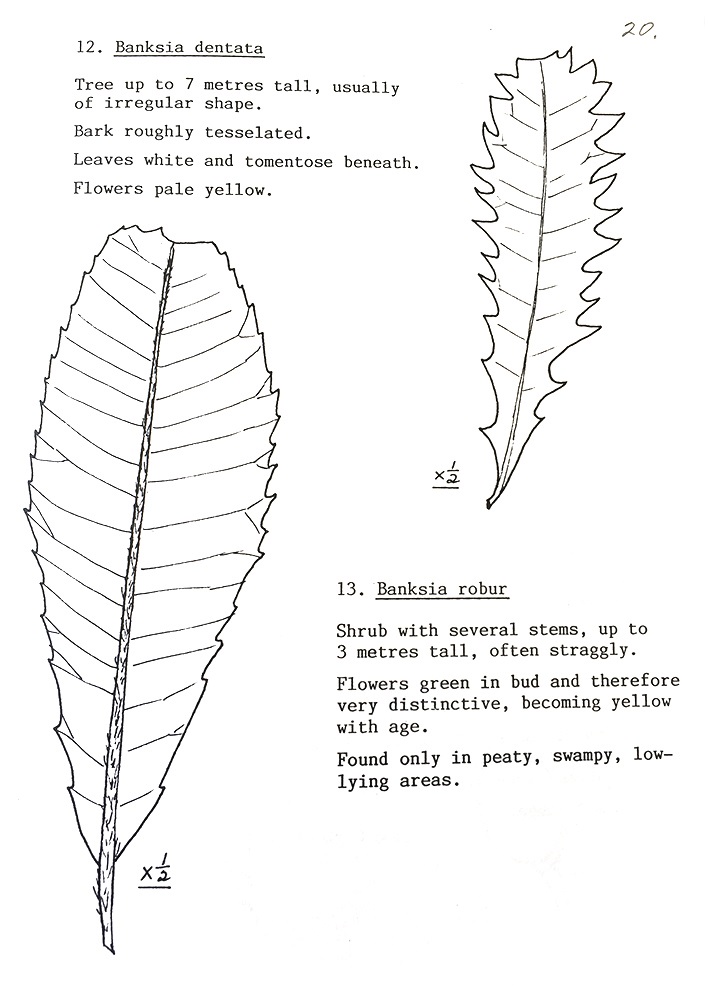
Illustrations by Ann Radke of Banksia robur and B. dentata leaves
The Trip
On Friday, it was good to catch up with Tony Roberts at The Cooktown Botanic Gardens for a quick tour. There have been many new additions and improvements including the walkways and signage. The gardens were looking at their best, ready for the influx of visitors to the Cooktown festival. From here we made our way to Hopevale and Elim Beach to set up camp.
Saturday and Sunday saw us traipsing about the landscape – walking through a Banksia robur swamp, with Banksia robur, B. dentata, Drosera burmanni, D. lunata, D. petiolaris, D. serpens, Leptospermum polygalifolium, Asteromyrtus lysicephala – a common plant in damp areas on Cape York. Many sedges, grasses and other little swamp plants were in abundance.

Drosera serpens and hat pins.
Photo Jeanette Venturato
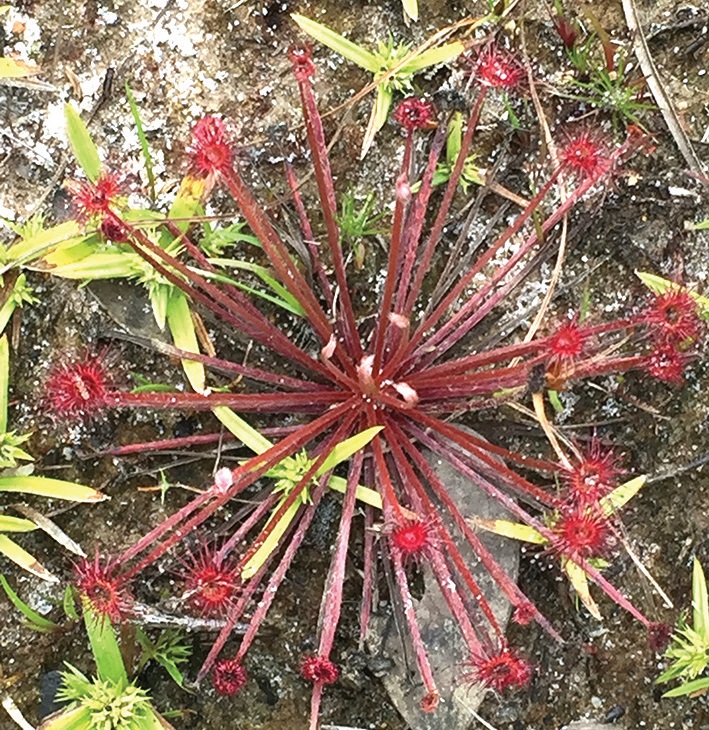
Drosera lanata
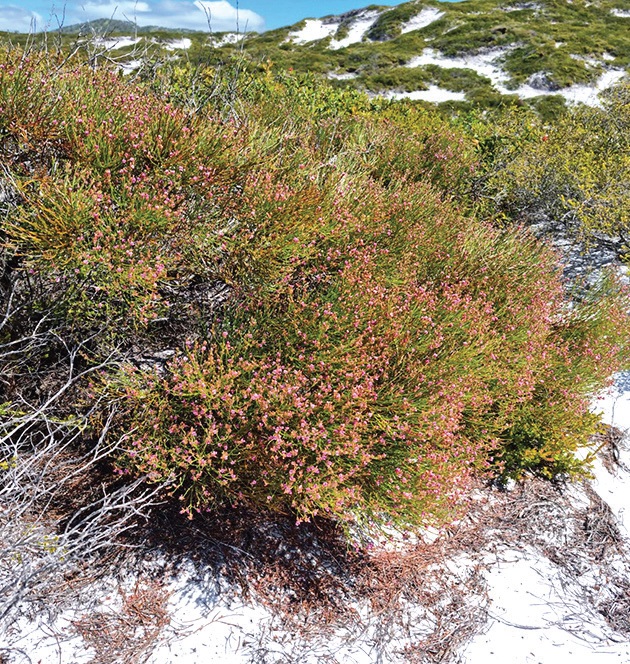
Jacksonia thesioides.
Photo Jeanette Venturato
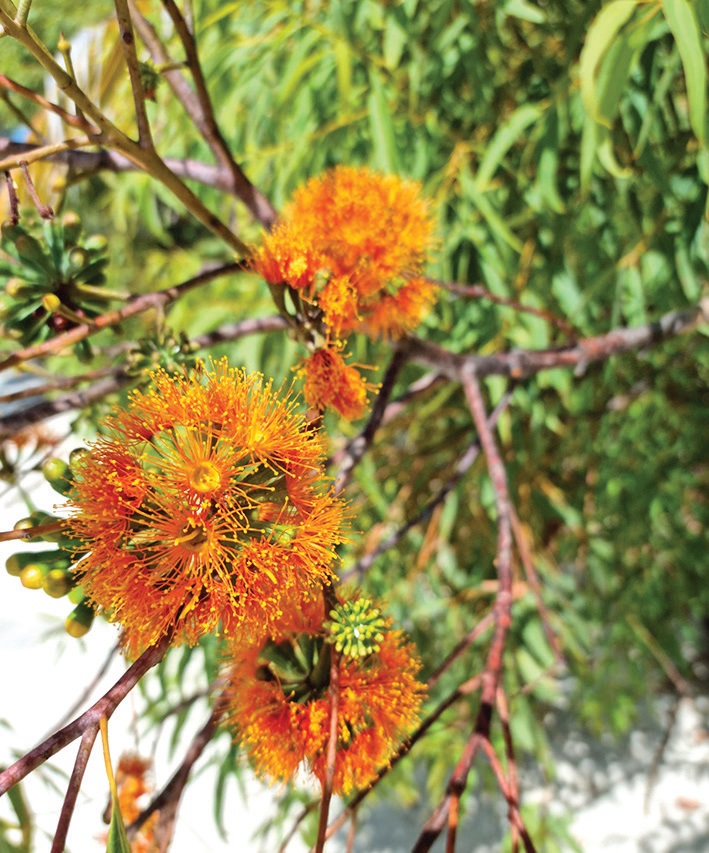
Eucalyptus phoenicea
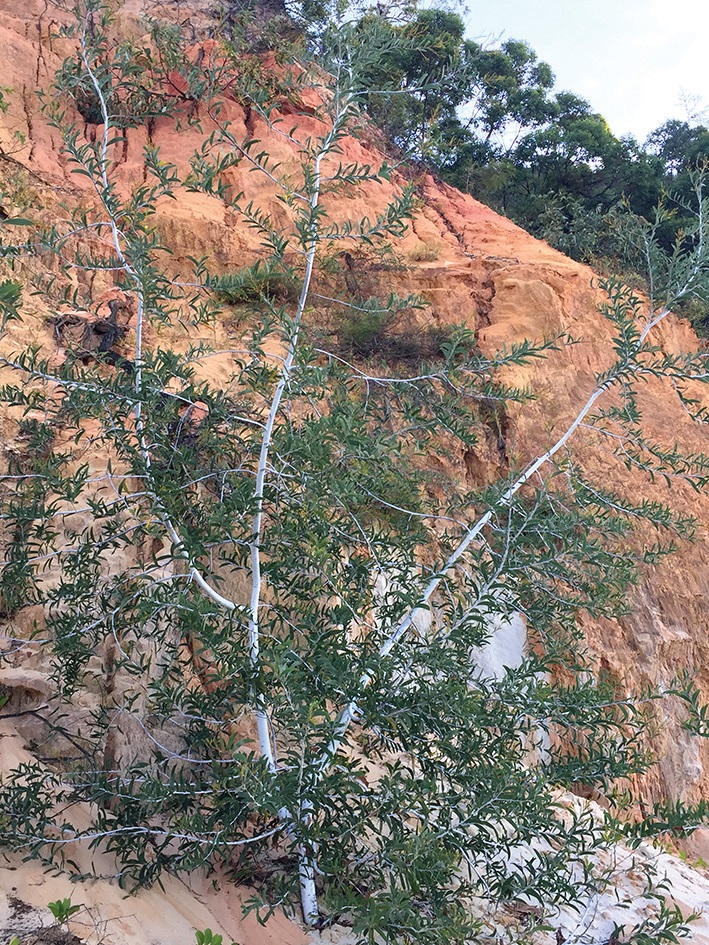
Acacia racospermoides
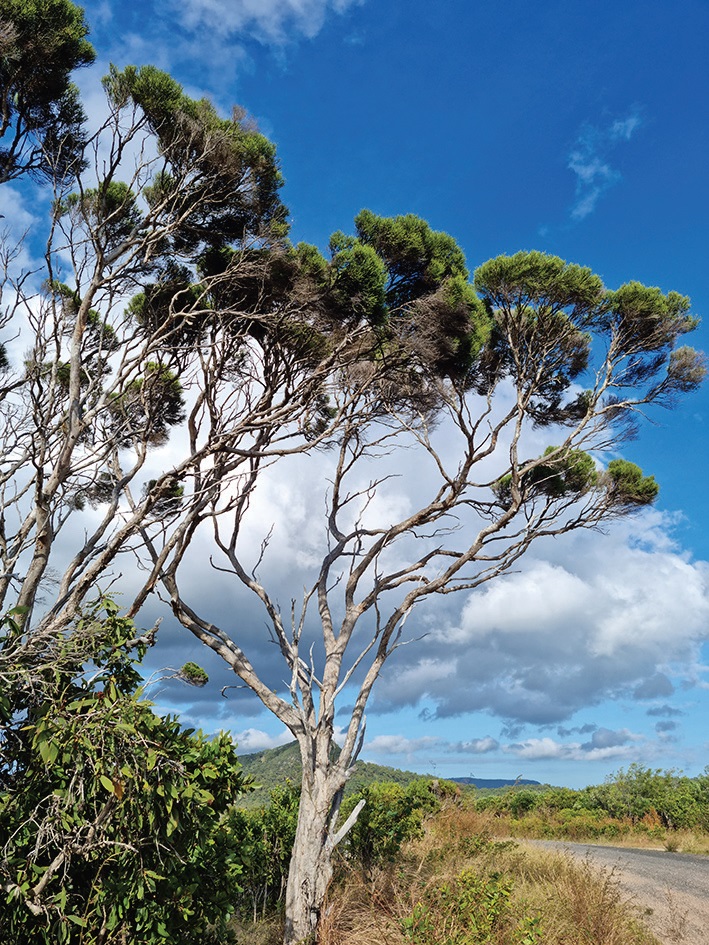
Melaleuca arcana.
Photo Jeanette Venturato
Driving the roads through the heath country we encountered species that are only found in this part of the world. Xanthostemon arenarius was at the end of its flowering and brought much excitement to some of our members. Melaleuca arcana, Acacia pubirhachis and A. racospermoides line the roads with their unusual foliage, bright flowers or towering trunks. Eucalyptus phoenicea with its bright orange flowers attracted large numbers of rainbow lorikeets.
The wind was strong as we walked the dunes of the heath, the low shrubby 1-2m high Grevillea pteridifolia were putting on a spectacular show, the Neofabricia myrtifolia, Jacksonia thesioides, Hibbertia banksii, all in flower and orchids holding on in the wind to their hosts.
We enjoyed lunch on the beach with views of white sand and Cape Bedford, watching the locals fishing for their dinner. Hare’s foot grass Elim Beach heath walk after lunch. Cape Bedford in the background Ectrosia leporine lines the road where the vegetation has been disturbed, Boronia alulata, Callistemon (Melaleuca) polandii and Thryptomene oligandra were flowering to name a few of the species that haven’t already been mentioned. The day’s planned activities ended with a walk to the Coloured Sands, naturally occurring colours on sandy cliffs that line the beach. Small patches of mangroves and Acacias are present along this idyllic coastline. It was mentioned a few times how pristine the area is and talks of the ocean current, waves etc. has left this beach free of rubbish which sadly is rare today, so we all felt very privileged to be experiencing this.
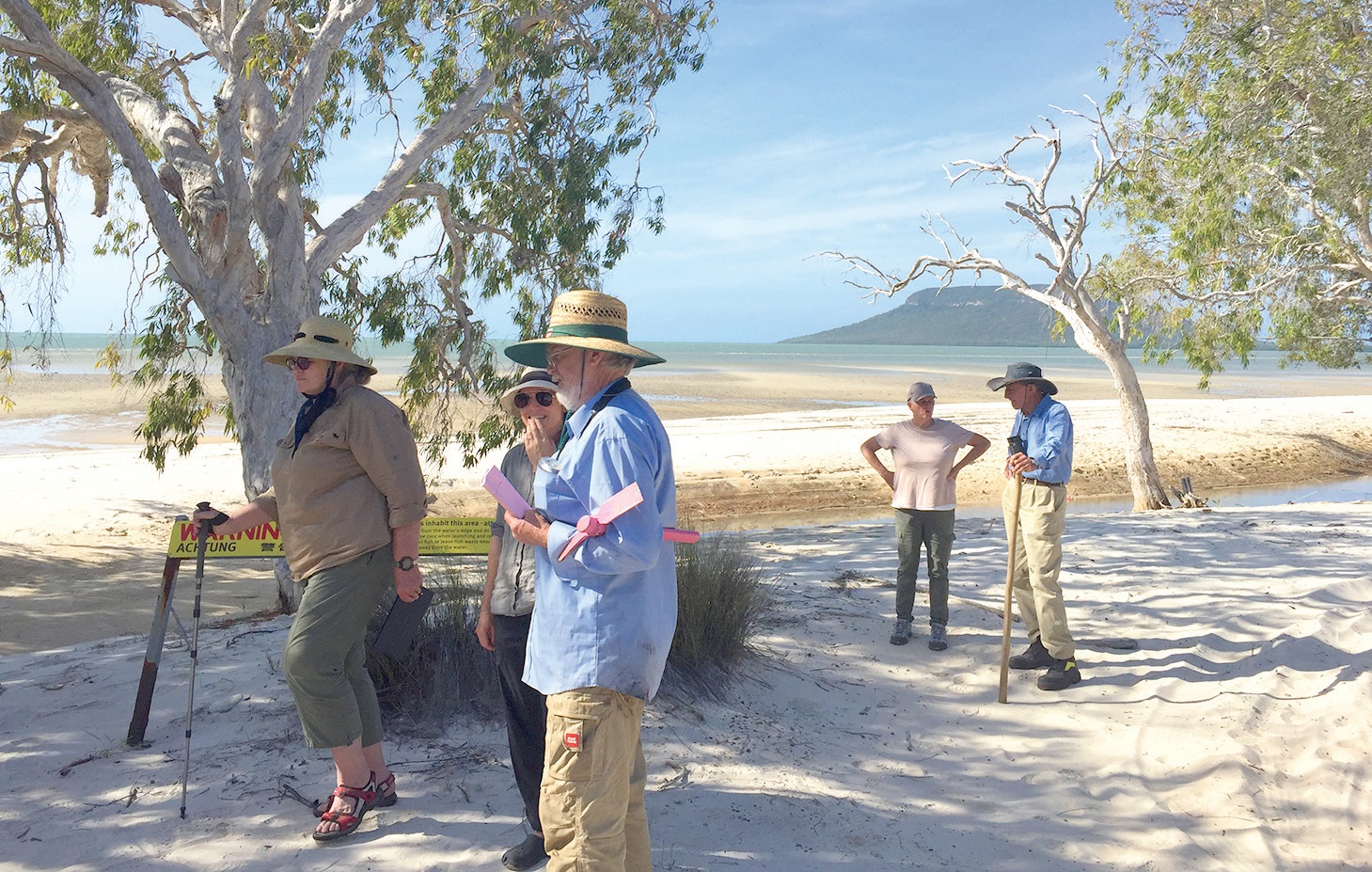
Elim Beach heath walk after lunch. Cape Bedford in the background
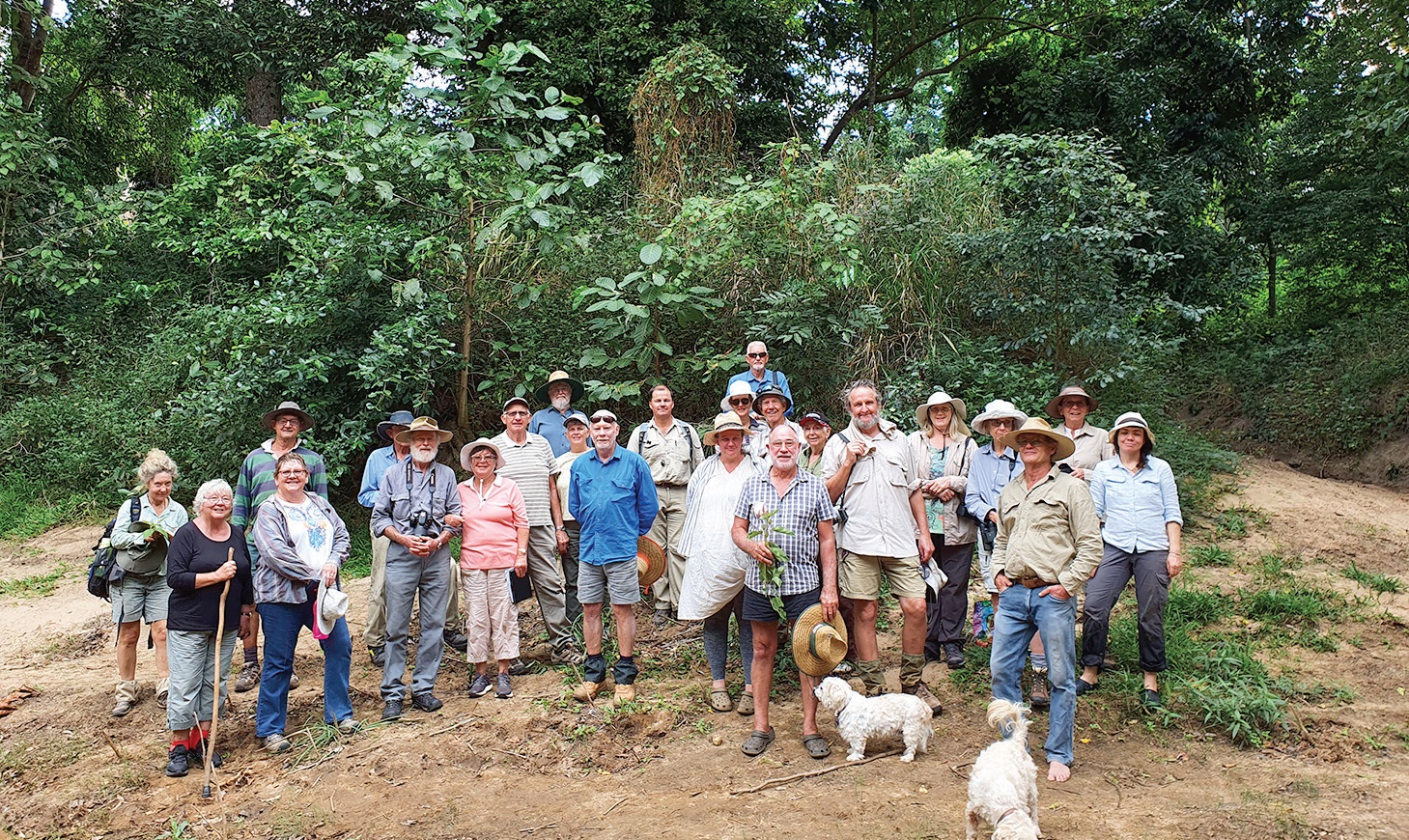
The crew at the McIvor River crossing. Photo Stuart Worboys
Most gathered around a campfire every evening to debrief, get to know each other, swap stories, “solve the problems of the world” and get info for the following day – a nice way to wind down at the end of the day.
Sunday we visited a very special site with naturally occurring Hoop Pines and dry rainforest. It was incredible to see the variation of species and we were all very happy to spend two hours exploring this site. The Ant plants were prolific and orchids were holding on to the unusual bark of the Araucaria. Massive elkhorns, hoyas, Eriostemon banksii, Syzygium banksii, Tephrosia sp. and the southern limit of Lomandra banksii were all present. We enjoyed morning tea on top of a hill with views in all directions.
Lunch was at the McIvor River, a meeting place of the Wet Tropics and the Cape York rainforests. This is the northern limit of Archontophoenix alexandrae Alexandra palm and the southern limit of Cleistanthus hylandii, both well known garden plants. A couple of giant Alstonia scholaris trees are beside the road and provided lots of “oohs and aahs” as we walked along. Syzygium malaccense makes an appearance, near its southern limit.
This is where we said goodbye to the people heading back to Cooktown.
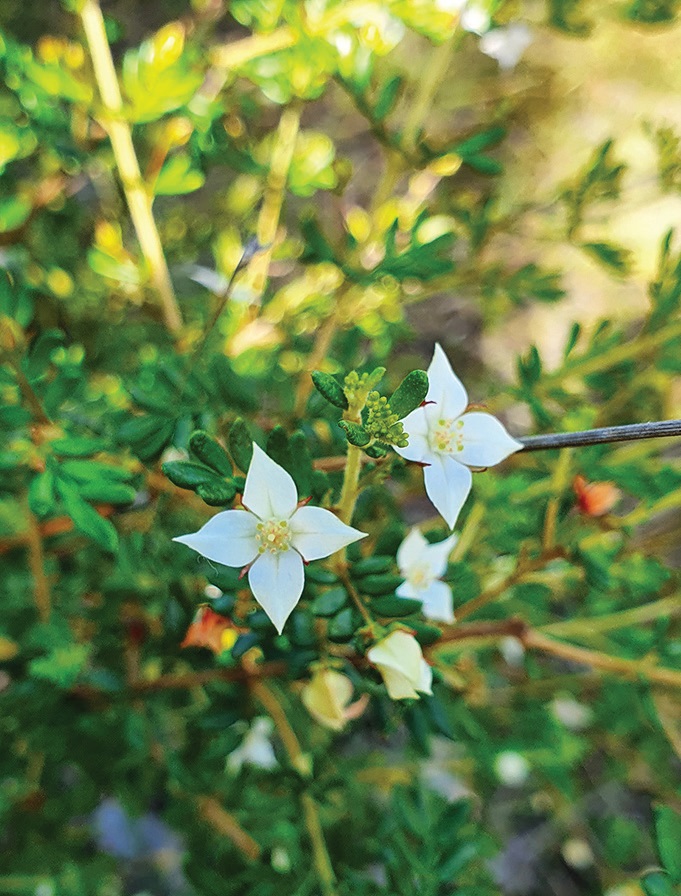
Boronia alulata.
Photo Stuart Worboys
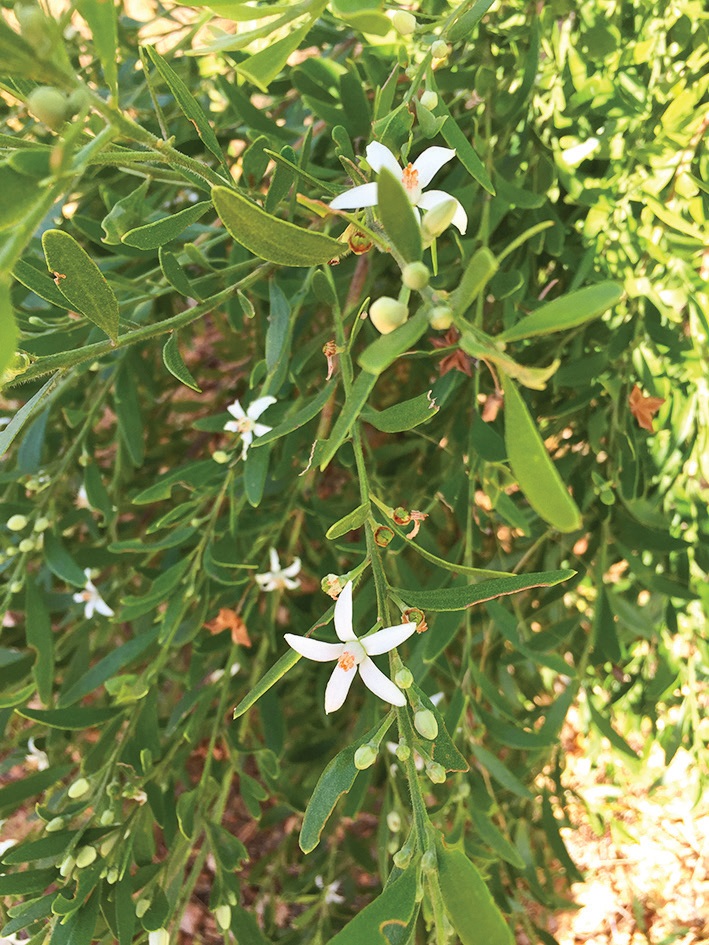
Eriostemon banksii
Monday saw everyone who was coming to Laura, pack up camp and head off to Isabella Falls. Apart from the diversity of plants found at this site, it was pointed out that the four main common shrubs of Cape York are Leptospermum madidum, Atractocarpus (Randia) sessilis, Dodonaea polyandra and Choriceras tricorne and they are all present here. This is where we said goodbye to our JCU botanists whose wealth of knowledge was much appreciated.
The Battle Camp Road is a unique sandstone area with special plants dotted throughout. The odd looking Astrotricha pterocarpa was spotted, a single stemmed plant to about 2m tall with no branches. Hovea, Gompholobium and Goodenia species were spotted. A giant Corypha utan, which flowers once and then dies, was a good photo opportunity after lunch at the Normanby River.
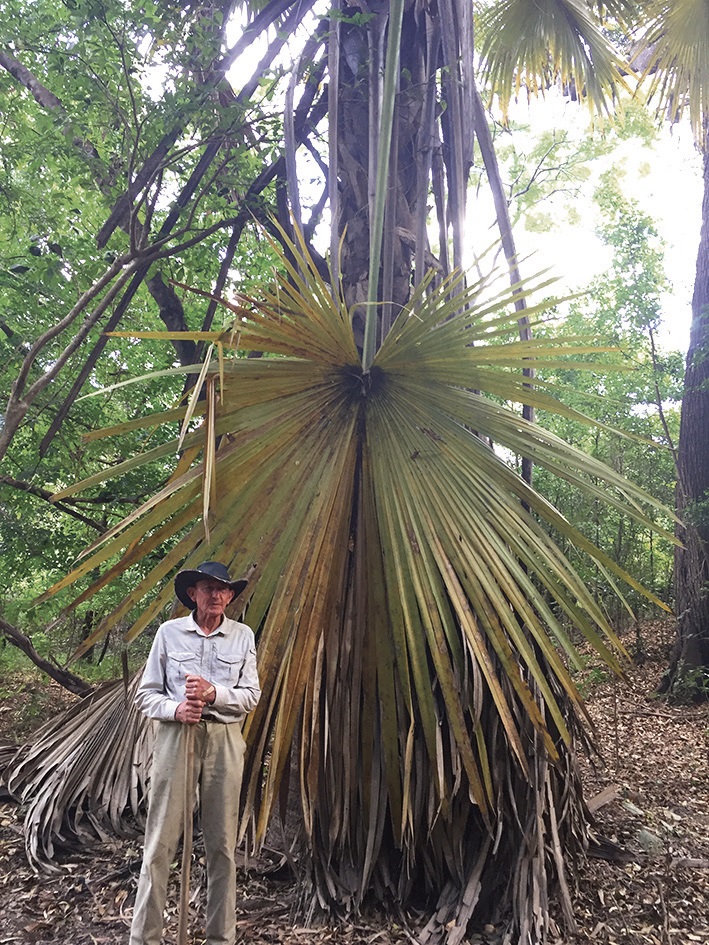
Corypha utan and John Hill
We drove on to camp at Laura for the night. Laura is a well known area for its sandstone escarpments with Aboriginal paintings with over 10,000 sites recorded. It has an enormous number of rare and unusual plants that are only found on sandstone. At the going speed of 500m per hour, we climbed the escarpment and found a lot of interesting plants.
Xanthostemon umbrosus, Homoranthus tropicus and Jacksonia quinkanensis were all seen before the first gallery of paintings. The flowering of the Homoranthus was a first for all of us there. Many Tephrosia and Acacia species grace the escarpments, Syzygium rubrimolle wasn’t spotted but it is only from this area. Native lemongrass, spinifex type and other grasses cover the ground and in between rocks. When we arrived half way up we saw Aboriginal paintings in three galleries open to the public.
At the end of the walk we came back down for smoko and all agreed on how wonderful the trip was. It was time to head home. No hiccups, breakdowns, accidents, nobody got lost and everybody had a good time. Thank you to everyone who attended; it was a great group of people and the knowledge within the group was vast and varying, with lots of sharing of info. It was great to see some of our garden plants in their natural habitat and see a most remarkable part of our region. A special thank you also goes to indefatigable Peter Radke who with his vast knowledge of the area and its plants, chose the best sites possible to experience the region on this excursion.
